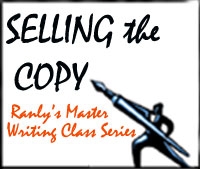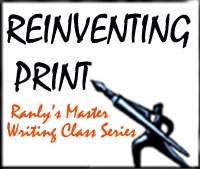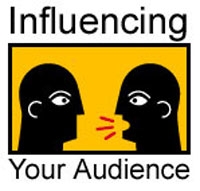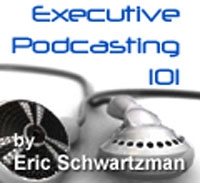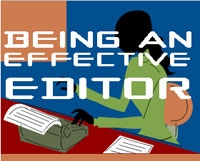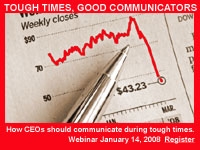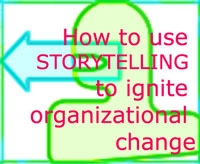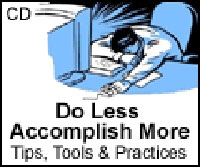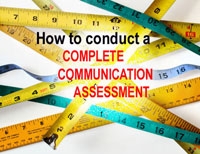Today’s readers are better described as skimmers and scanners; the story is the last thing and the least-read thing they read. Writing effective headlines, captions and blurbs must be an integral part of the writing and editing process — from the beginning, with everyone involved.
More about this seminar from Don Ranly:
“In this seminar, we’ll talk about what makes good headlines or titles and the techniques for creating them. We’ll discuss various kinds of heads — those strictly for news, those for features and those for advertising. What they all have in common is that they must grab readers. They must sell the copy. And EVERYONE must be involved in creating them. We will discuss the creative process that goes into coming up with the best heads.
“Blurbs, break-outs, pullquotes, whatever you choose to call them, grab attention. They stop readers and make them try to find other interesting things in the copy. We’ll discuss what kinds of things to put into blurbs and how to construct them.
“Captions are the most neglected element in most publications. Some photos go without any captions — which is inexcusable. People read captions, so they are a good place to deliver important information and to hook readers into reading the story. Other captions simply explain what’s going on in the photo. People can usually see that. We’ll discuss content of captions and their proper length, as well as typeface, etc. We’ll give you 10 rules for writing them.”
Learning Topics
Underestimating the intelligence of your audience is just one of the 10 major mistakes to be reviewed in this teleseminar. Others include:
- The techniques and importance of brainstorming
- How and why to use literary and poetic techniques
- Four characteristics of brighter, more attractive heads
- How to write summary blurbs that give readers the benefit
- The power of the word “how”
- The importance of tips and of quantifying the benefits
- How to write internal blurbs that tease and coax
- How to write captions that complement and inform
Instructor:
 Don Ranly, Ph.D., is professor emeritus of the Missouri School of Journalism, where he taught for 32 years. He has an M.A. in journalism, an M.A. in speech from Marquette University, a certificate in film, radio and television from New York University and a doctorate in journalism from the University of Missouri.
Don Ranly, Ph.D., is professor emeritus of the Missouri School of Journalism, where he taught for 32 years. He has an M.A. in journalism, an M.A. in speech from Marquette University, a certificate in film, radio and television from New York University and a doctorate in journalism from the University of Missouri.
Don has conducted more than 950 seminars for organizations, corporations, associations and publications. He is co-author of News Reporting and Writing (8th ed.), Telling the Story: The Convergence of Print, Broadcast and Online Media (2nd ed.) and Beyond the Inverted Pyramid and author of Publication Editing.
In 1995, he received a University of Missouri-Columbia Faculty-Alumni Award and was named the O.O. McIntyre Distinguished Professor of Journalism for 1995-1996. In 1998, he won a University of Missouri Gold Chalk award for outstanding service in the training and mentoring of professional students. In 2002, he was elected a Fellow of the International Association of Business Communicators. In 2003, he became a William T. Kemper Fellow for Excellence in Teaching and, in 2005, won a Lifetime Achievement Award from the American Society of Business Publications Editors.
He currently serves as executive director of the Missouri Association of Publications, which he founded in 2004
Are you the same journalist with the same skills you had five or 10 years ago? When you sit down to write, do you visualize your piece the same way you did then? And what about your publications? Are they keeping up with the times or looking tired and ponderous? What has the Internet taught you about how to produce your publications in such a way that readers can access information more effectively and efficiently?
The Internet has changed forever the way people receive, expect to receive and process information. It’s a “click-here” world in which readers are completely in charge. They want and expect information NOW. So how do you ensure you’re giving them what they want?
Learnings/takeaways:
You will learn how to think verbally and visually and save your readers time. You’ll also pick up practical tips that will help make your text easy-to-read and ensure the information you provide is consistently legible and user-friendly.
The course explores:
- Five characteristics of a good Web site and how to apply them to your publication
- Three principles for writing on the Web and how to apply them to print
- 10 rules for writing on the Web and how to apply them to print.
Best of all, you’ll be able to put these tips to work immediately and see instant improvement in your publications.
Instructor:
 Don Ranly is professor emeritus of the Missouri School of Journalism, where he taught for 32 years. He has an M.A. in journalism, an M.A. in speech from Marquette University, a certificate in film, radio and television from New York University and a doctorate in journalism from the University of Missouri.
Don Ranly is professor emeritus of the Missouri School of Journalism, where he taught for 32 years. He has an M.A. in journalism, an M.A. in speech from Marquette University, a certificate in film, radio and television from New York University and a doctorate in journalism from the University of Missouri.
Don has conducted more than 950 seminars for organizations, corporations, associations and publications. He is co-author of News Reporting and Writing (8th ed.), Telling the Story: The Convergence of Print, Broadcast and Online Media (2nd ed.) and Beyond the Inverted Pyramid and author of Publication Editing.
In 1995, he received a University of Missouri-Columbia Faculty-Alumni Award and was named the O.O. McIntyre Distinguished Professor of Journalism for 1995-1996. In 1998, he won a University of Missouri Gold Chalk award for outstanding service in the training and mentoring of professional students. In 2002, he was elected a Fellow of the International Association of Business Communicators. In 2003, he became a William T. Kemper Fellow for Excellence in Teaching and, in 2005, won a Lifetime Achievement Award from the American Society of Business Publications Editors.
He is a former executive director of the Missouri Association of Publications, which he founded in 2004.
This learning opportunity is ideal for:
- Writers
- Editors
- Designers
- Publishers, print and electronic
It’s also an important addition to the offerings of college/university libraries and bookstores.
Business professionals are called on frequently to write messages that attempt to get people to do things: to comply with a request, to accept ideas or to provide support. This often requires overcoming resistance, swaying the skeptics, winning over the “undecideds” or motivating the apathetic.
The ability to influence an audience is critical to business success, yet most people know little about the psychology of persuasion. It is not taught in high school, rarely in college, and almost never in an executive education program.
This session taps into the field of human behavior change and attitude modification. It looks at techniques you can use when you craft messages, for a written communication or for a speech, so that you influence the reader’s thought process and increase the likelihood that your reader or listener will agree. These techniques also will strengthen the writer/speaker’s credibility in the mind of the audience.
Aimed primarily at managers and executives, you’ll learn about gaining compliance and building your credibility through the use of principles of influence. The workshop focuses on crafting written and spoken messages in such a way as to alter the reader’s thought process.
Learning Topics:
- The importance of credibility
- What it really means to analyze your audience
- How to create a strong opening
- How to package your information for maximum impact
- Principles of attitude change: five ways to influence an audience
- Helping the audience remember: tips for making your ideas stand out
Instructor:
 Ken O’Quinn is a professional writing coach, who conducts workshops and one-on-one coaching in Fortune 500 companies and global public relations firms. He is the author of Perfect Phrases for Business Letters (McGraw-Hill, 2006).
Ken O’Quinn is a professional writing coach, who conducts workshops and one-on-one coaching in Fortune 500 companies and global public relations firms. He is the author of Perfect Phrases for Business Letters (McGraw-Hill, 2006).
He started Writing With Clarity in the mid-‘90s, following a 21-year journalism career, most of it with the Associated Press. He now works with companies such as Chevron, Campbell Soup, Visa, Intel, Eli Lilly, Raytheon, Reebok, Motorola and Sprint, and with PR firms such as Fleishman Hillard, Burson-Marsteller, Porter Novelli and Edelman. He also is a writing instructor for the National Investor Relations Institute.
Ken has been a guest speaker at the PRSA and IABC international conferences and at the American Press Institute. His writing has appeared in major U.S. newspapers and in such publications as the Harvard Management Communication Letter and the Employee Communication Management Journal.
Forward-thinking marketing and public relations executives are using the power of podcasting to communicate directly with their key audiences via the Net. Find out what podcasts are and how you can put them to work for your organization. This webinar, led by the producer and host of the popular podcast On the Record…Online, will take you through the process in five easy steps, to arm you with the knowledge you need to evaluate and decide how to integrate this effective, efficient channel into your marketing or communications program.
Learning Topics:
- The ABCs of Podcasting: what podcasts are and where they came from, how to use them, popular formats and lengths, how to measure and monitor them, and more
- Getting started: the equipment you’ll need, where to find freeware and commercial podcasting software, and troubleshooting staples
- Production tips: how to conduct and record live and phone interviews, what freeware to use to edit your podcast, and how to find podcasts through directories and search engines
- Business case studies: Hear excerpts from leading business podcasts, and learn how Disney and IBM use podcasts to promote events and thought leadership
- Marketing your podcast: Get a primer on RSS-enabling and uploading your podcast, learn how to launch a blog to distribute your podcast, and get valuable leads on how to promote your feed.
Instructor:
 Eric Schwartzman is managing director of Schwartzman & Associates, a boutique public relations firm based in Los Angeles that specializes in helping organizations integrate the Web into their marketing and public relations programs. He is also chairman and founder of iPressroom, which helps organizations extend the impact of their public relations, corporate communications and marketing programs through easy-to-use, marketing communications software tools and services.
Eric Schwartzman is managing director of Schwartzman & Associates, a boutique public relations firm based in Los Angeles that specializes in helping organizations integrate the Web into their marketing and public relations programs. He is also chairman and founder of iPressroom, which helps organizations extend the impact of their public relations, corporate communications and marketing programs through easy-to-use, marketing communications software tools and services.
A recognized expert in the field of new media marketing communications, Eric has presented at numerous conferences and seminars and has appeared at many colleges and universities. He is regularly quoted in articles on podcasting, blogging and new media in publications such as Advertising Age, PR Week, Podcasting News, Econtent, PR News and Media Relations Insider. He blogs about how public relations, the news media and emerging technologies influence perception and shape popular opinion at the Spinfluencer. His podcast On the Record… Online features discussions with leading journalists about how they use technology to cover the news.
Testimonials:
- “Eric makes it easy to understand how to use podcasts to communicate to your key audiences.” Ava Gutierrez, media relations director, County of Los Angeles
- “Just the right amount of information — not too technical and applicable specifically for creating a podcast campaign.” Sarah Prinster, director of marketing, Savi Technology
- “… a must for any marketing or PR exec who wants to get up to speed with podcasting.” Sally Falkow, APRP, Expansion Plus
We’ve all heard the news: Forget flash (or even Flash). To attract and hold prospects to your website, you need content that meets the needs, values and expectations of your market. Great content draws visitors, attracts links, and builds your organization’s reputation for service and expertise. In short, content is king. But where will your content come from? How will you find it? How will you shape it? And how will you write it for maximum impact — and search engine visibility? Crafting Killer Web Content will show you how.
Learning Topics
In one convenient, 75-minute crash course, you will acquire the practical skills you need to:
- Uncover the hidden know-how within your organization
- Solicit cooperation from the crucial product and service people closest to your customers
- Create keyword-saturated Web glossaries in mere hours
- Select the best content options for your pages
- Craft effective, traffic-building blogs
- Incorporate keyword strategies into your writing
- Develop compelling case studies you can use on your website, collateral packages, press kits and more
Other value adds:
- Debunking the myth about writing long
- Why word-specificity is your friend
- Why testimonials and where they should go
- How to write skimmable sub-heads that tell the story
- Guarantees that guarantee believability
- What readers expect from marketing blog
Instructor:
 Jonathan Kranz is the author of Writing Copy for Dummies and a marketing/PR writer serving consumer and B2B clients in high-tech, healthcare, banking, insurance, education, financial services and other industries. His clients include Boston Private Bank & Trust, Dell Computers, IBM, Liberty Mutual, Pitney Bowes and many others. He is a regular contributor to leading marketing publications such as MarketingProfs.com, RainToday.com, DIRECT magazine, DM News and the Harvard Management Communications Letter. Jonathan has taught writing courses at Harvard University Extension School, Emerson College and Northeastern University, and offers in-house marketing writing seminars to corporate clients.
Jonathan Kranz is the author of Writing Copy for Dummies and a marketing/PR writer serving consumer and B2B clients in high-tech, healthcare, banking, insurance, education, financial services and other industries. His clients include Boston Private Bank & Trust, Dell Computers, IBM, Liberty Mutual, Pitney Bowes and many others. He is a regular contributor to leading marketing publications such as MarketingProfs.com, RainToday.com, DIRECT magazine, DM News and the Harvard Management Communications Letter. Jonathan has taught writing courses at Harvard University Extension School, Emerson College and Northeastern University, and offers in-house marketing writing seminars to corporate clients.
This webinar will help supervisors get the most out of their writers by creating an environment where writers develop and gain confidence, and where the focus is on the writer as much as the writing.
Practical Advice for:
- Building a collaborative relationship with writers
- Creating an atmosphere where writers develop
- Reducing the amount of time rewriting copy
- Improving editing skills
What You Will Learn:
- How to reinforce the notion that writing is valued
- How to improve communication with writers
- How to get the most out of a one-on-one conversation about performance
- How to build confidence
- How to distinguish between coaching and crisis repair
- What to do when you don’t think the writer will ever “get it”
- What to do when it becomes easier to toss the draft and write it yourself
- How to know when to make changes and when not to
- What you can do if you’re not confident
Real world questions answered:
- What processes can help avoid writer disasters at deadline?
- What do you tell a writer who’s article totally misses the mark?
- How should writers and graphic designers interact, and how often?
Instructor:
 Ken O’Quinn is a professional writing coach, who conducts workshops and one-on-one coaching in Fortune 500 companies and global public relations firms. He is the author of Perfect Phrases for Business Letters (McGraw-Hill, 2006).
Ken O’Quinn is a professional writing coach, who conducts workshops and one-on-one coaching in Fortune 500 companies and global public relations firms. He is the author of Perfect Phrases for Business Letters (McGraw-Hill, 2006).
He started Writing With Clarity in the mid-’90s, following a 21-year journalism career, most of it with the Associated Press. He now works with companies such as Chevron, Campbell Soup, Visa, Intel, Eli Lilly, Raytheon, Reebok, Motorola and Sprint, and with PR firms such as Fleishman Hillard, Burson-Marsteller, Porter Novelli and Edelman. He also is a writing instructor for the National Investor Relations Institute. He works with all levels of staff and managers. Ken has been a guest speaker at the PRSA and IABC international conferences and at the American Press Institute. His writing has appeared in major U.S. newspapers and in the Harvard Management Communication Letter and the Employee Communication Management Journal.
How effective CEO presentations can help companies rebound during an economic downturn
When a company’s earnings and stock price are on the rise, it may not be critically important how well a CEO performs behind a lectern, in front of cameras and microphones, or at a hearing table. But as earnings and stock price head south, a CEO’s ability to inspire confidence through speeches and presentations can prove essential to a company’s ability to survive and recover. CEOs who communicate well can, at the very least, buy the time needed to put an effective turnaround strategy in place.
With the economy battered by the credit crisis, high fuel prices, and other maladies, growing numbers of corporate leaders face the challenge of finding ways to inspire key audiences who are both very worried and extremely important—employees, analysts, stockholders, regulators, and the press.
This webinar offers some very specific, hands-on advice how CEOs should communicate during tough times. The advice is based on the experience of key CEO’s who have been there and done that –Former CEOs Lee Iacocca of Chrysler and Champ Mitchell of Network Solutions, Jack Welch of GE, as well as current CEOs John Chambers of Cisco Systems and Brightpoint’s Robert Laikin. All used first-person communications effectively to turn companies around or dramatically boost their performance.
Sun Microsystems CEO Scott McNealy once said, “Communication needs to be a core competency of any business. It starts with the CEO.”
You Will Learn How CEOs Can:
- Make communication a priority.
- Be proactive, not reactive
- Handle problems and mistakes.
- Develop and present a recovery plan.
- Match their presentations to their audience
- and much more
Presented by:
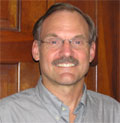 Dr. Jeff Porro, Ph.D. has written “first-person speeches” and provided communication strategies for the CEOs of Sodexo, Eastman Chemicals, the McGraw Hill Companies, Office Depot, the COO of General Mills, as well as for diplomats such as former UN Secretary General Kofi Annan, and other government leaders, and presidents of some of the nation’s leading trade and professional associations. He helps corporate, government and nonprofit leaders take their visions to a new level, moving key audiences with speeches that engage minds, open eyes, touch hearts and awaken the spirit. In addition to offering his expertise to world and business leaders, he has extended his skills to the world of entertainment. Dr. Porro discovered and researched the true story of a Jim Crow-era African American college debate team, and helped turn it into the 2007 feature film The Great Debaters starring Denzel Washington.
Dr. Jeff Porro, Ph.D. has written “first-person speeches” and provided communication strategies for the CEOs of Sodexo, Eastman Chemicals, the McGraw Hill Companies, Office Depot, the COO of General Mills, as well as for diplomats such as former UN Secretary General Kofi Annan, and other government leaders, and presidents of some of the nation’s leading trade and professional associations. He helps corporate, government and nonprofit leaders take their visions to a new level, moving key audiences with speeches that engage minds, open eyes, touch hearts and awaken the spirit. In addition to offering his expertise to world and business leaders, he has extended his skills to the world of entertainment. Dr. Porro discovered and researched the true story of a Jim Crow-era African American college debate team, and helped turn it into the 2007 feature film The Great Debaters starring Denzel Washington.
As head of Porro Associates, LLC, Dr. Porro draws on his background as a research scholar and a Washington policy analyst to weave persuasive arguments. At the same time, his creative writing has given him the skill and empathy to capture a speaker’s voice and evoke the speaker’s passion. Dr. Porro holds a Ph.D. in political science from U.C.L.A..
 Robert Laikin, founder of Brightpoint, has served as a member of Brightpoint’s board of directors since its inception in August 1989. Mr. Laikin has been Chairman of the Board and Chief Executive Officer of the Company since January 1994. Mr. Laikin was President of Brightpoint from June 1992 until September 1996 and Vice President and Treasurer of Brightpoint from August 1989 until May 1992. From July 1986 to December 1987, Mr. Laikin was Vice President, and from January 1988 to February 1993, President of Century Cellular Network, Inc., a company engaged in the retail sale of cellular telephones and accessories. His honors and awards include:
Robert Laikin, founder of Brightpoint, has served as a member of Brightpoint’s board of directors since its inception in August 1989. Mr. Laikin has been Chairman of the Board and Chief Executive Officer of the Company since January 1994. Mr. Laikin was President of Brightpoint from June 1992 until September 1996 and Vice President and Treasurer of Brightpoint from August 1989 until May 1992. From July 1986 to December 1987, Mr. Laikin was Vice President, and from January 1988 to February 1993, President of Century Cellular Network, Inc., a company engaged in the retail sale of cellular telephones and accessories. His honors and awards include:
- Recipient of the William L. Haeberle Entrepreneurial Legacy Award for 2008
- Inducted into the Central Indiana Business Hall of Fame in 2008
- Received a Stevie Award for Best Turnaround Executive in 2007
- Recipient of the Distinguished Entrepreneur Award by the Kelley School of Business Alumni Association (1999)
- Recipient of the Indiana Entrepreneur of the Year Award (1995)
- Received an honorable mention in 1995 Inc. Magazine National Entrepreneur of the Year Award
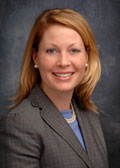 Kelly R. Lang is Director of Strategic Communications in the Corporate Communications department of Cisco Systems. Ms. Lang joined Cisco in 2001 as Marketing Communications Manager and in 2003 joined the Office of the President as John Chambers’ Executive Communications Manager. Today, Ms. Lang is responsible for the Executive Communications and Operations functions including the Office of the Chairman and CEO (OCC), the Chief Financial Officer (CFO), and the Chief Globalisation Officer (CGO). Prior to joining Cisco, Ms. Lang was Program Manager for a Global Event Marketing Organization, Nth Degree, from 1998-2000. From 1996-1998, Ms Lang was Assistant Director of Administration with RCI Group, Inc. after graduating with a Bachelor of Arts degree from the University of Maryland, where she was recognized with outstanding student achievements including Maryland’s Talent and Tutor Search Program.
Kelly R. Lang is Director of Strategic Communications in the Corporate Communications department of Cisco Systems. Ms. Lang joined Cisco in 2001 as Marketing Communications Manager and in 2003 joined the Office of the President as John Chambers’ Executive Communications Manager. Today, Ms. Lang is responsible for the Executive Communications and Operations functions including the Office of the Chairman and CEO (OCC), the Chief Financial Officer (CFO), and the Chief Globalisation Officer (CGO). Prior to joining Cisco, Ms. Lang was Program Manager for a Global Event Marketing Organization, Nth Degree, from 1998-2000. From 1996-1998, Ms Lang was Assistant Director of Administration with RCI Group, Inc. after graduating with a Bachelor of Arts degree from the University of Maryland, where she was recognized with outstanding student achievements including Maryland’s Talent and Tutor Search Program.
Ms. Lang is passionate about business and how communication helps drive business strategy to become a change agent for the organization. Her focus on process, operational excellence and hiring the right talent to support highly visible executives helps drive a more integrated, cross-functional communication effort that highlights the increasingly complex and important role of the communications professional.
Who Should Attend
This webinar is primarily aimed at communicators and executives trying to cope with a slowing economy, including external communications, internal communications, and shareholder communications.
The best way to communicate with people you are trying to lead is very often through a story.
More and more organizations are realizing that stability and predictability are no longer reasonable assumptions. In fact, the number one problem of today’s managers is the difficulty in getting their organizations to adapt to a competitive environment that is neither stable nor predictable. Yet while change is irresistible, the organization often seems immovable.
Drawing on his experience as program director of Knowledge Management at the World Bank from 1996-2000 and his work with many of the top organizations in the world, Steve Denning shows how to identify and craft a springboard story; i.e., a story that will spark action. Using a simple template, you will be equipped to get started on crafting your own springboard stories.
What you will learn:
- The importance of storytelling
- Appropriate situations for telling stories
- Why storytelling can handle leadership challenges for which conventional command-and-control techniques are impotent
- The essential ingredients of a springboard story — i.e., a story to communicate a complex idea and galvanize action
- How and why storytelling can communicate complex ideas, and why stories are so persuasive
- How to find and craft springboard stories for your organization
- How to use storytelling to ignite your career by becoming an authentic leader
- A 10-point template for crafting your stories
- Eight types of stories that you can put to work for you
- How storytelling changed the way the World Bank shared knowledge
Who should purchase:
This exceptional learning opportunity is designed for managers and professionals in:
- Corporate Communications
- Marketing
- Advertising
- Internal Communications
- Public Affairs
- Public Relations
- Organizational Development
- Human Resources
- Corporate Strategy and Development
- Senior Management
- Anyone, anywhere in an organization
It’s also an important addition to the offerings of college/university libraries and bookstores.
Instructor:
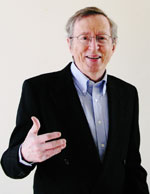 Steve Denning is the former program director of Knowledge Management at the World Bank. He now works with organizations in the U.S., Europe, Asia and Australia on knowledge management and organizational storytelling.
Steve Denning is the former program director of Knowledge Management at the World Bank. He now works with organizations in the U.S., Europe, Asia and Australia on knowledge management and organizational storytelling.
Steve is the author of several books on organizational storytelling, including:
- The Leader’s Guide to Storytelling: Mastering the Art and Discipline of Business Narrative (Jossey-Bass in April 2005).
- Squirrel Inc: A Fable of Leadership Through Storytelling (Jossey-Bass, 2004), a fable that elaborates seven different kinds of organizational storytelling
- The Springboard: How Storytelling Ignites Action in Knowledge-Era Organizations (Butterworth Heinemann, 2000), which describes how storytelling was used as a powerful tool for organizational change and knowledge management at the World Bank
Steve was born and educated in Sydney, Australia. He studied law and psychology at Sydney University and worked as a lawyer in Sydney for several years. He did a postgraduate degree in law at Oxford University in the U.K. before joining the World Bank, where held a number of positions from 1996 to 2000.
In 2000, Steve was named as one of the world’s “10 Most Admired Knowledge Leaders” (Teleos). In 2003, he was ranked as one of the world’s Top Two Hundred Business Gurus: Davenport & Prusak, “What’s The Big Idea?” (Harvard, 2003). In 2005, his book, The Leader’s Guide to Storytelling, was selected by the Innovation Book Club as one of the 12 most important books on innovation in the last few years.
Steve is a Senior Fellow at the James MacGregor Burns Leadership Academy at the University of Maryland.
There’s too much silliness, noise, and crap coming at you, and you want a shut-off valve. You want to make more of a difference, working on only what truly matters. Right?
There’s too much information to manage and too many key messages for people to focus on, right?
Then you don’t want to miss this teleseminar! Best-selling author Bill Jensen will share tips, tools, and practices from two of his most recent books, The Simplicity Survival Handbook: 32 Ways to Do Less and Accomplish More and What Is Your Life’s Work? And he’ll tailor all those tips for communicators trying to break through the clutter and get their messages heard and acted upon.
What You Will Learn:
- Practical tips for doing less because you’re working smarter.
- Tips for educating your teammates and senior executive clients.
- Feeling jazzed that you have a lot more control over morebetterfaster than you thought you did!
Real World Questions That Will be Answered:
- Do your 3×5 rules apply to letters sent by mail?
- On the Communitelligence Communication Leadership blog, you and Bill Boyd have been really banging heads over the issue of whose the culprit in the information overload problem. You are really charging a big part of the problem to communicators. What are the biggest mistakes you think communicators are making?
- How long should an e-newsletter be, and any advice on format?
- OK Bill, it’s easy to say do less of what doesn’t really matter, but how do I actually decide what are those things?
- How do you feel about email where the message is entirely in the subject line?
Practical Advice For:
- Dealing with bosses and who just don’t get it.
- Deleting 75% of your emails.
- Composing emails, messages and deliverables that won’t get deleted!
- Getting more out of fewer meetings.
- Doing less to get the budgets you need and much more.
Testimonial:
- “Relevant topic; simple presentation of concepts; actionable tips and tools; down-to-earth presentation style (“one of us”)”
- “I already sent an e-mail this afternoon with the improved subject line format! Makes great sense. Excellent seminar all around — Look forward to more in the future.”
Instructor:
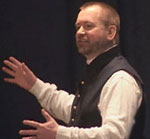 Harvard Business Review , CNBC and Fast Company have called Bill Jensen today’s foremost expert on work complexity and cutting through clutter to what really matters. The Conference Board designed an entire conference around his work.He has spent the past decade studying business’s ability to design work. (Much of what he has found horrifies him.)
Harvard Business Review , CNBC and Fast Company have called Bill Jensen today’s foremost expert on work complexity and cutting through clutter to what really matters. The Conference Board designed an entire conference around his work.He has spent the past decade studying business’s ability to design work. (Much of what he has found horrifies him.)
He is an internationally-acclaimed author and speaker who is known for provocative ideas, extremely useful content, and his passion for making it easier for managers and employees to work smarter and accomplish extraordinary feats.
The common thread in every Jensen presentation is that your biggest competition is not “out there” — in today’s cluttered and morebetterfaster business environments, you are competing for everyone’s time and attention!
His first book, Simplicity, has been hailed as a “breakthrough in the design of communication and understanding,” and was the Number 5 Leadership/Management book on Amazon in 2000. His next best-sellers were Work 2.0, and Simplicity Survival Handbook: 32 Ways to Do Less and Accomplish More.
His latest book, What is Your Life’s Work?, captures the intimate exchanges between mothers and daughters, fathers and sons, and caring teammates, all talking about what matters at work, and in life.
Bill has over 25 years of experience in communication and change consulting. He holds degrees in Communication Design and Organizational Development. He’s CEO of The Jensen Group, whose mission is: To make it easier to get stuff done. Among the Jensen Group’s clients are Bank of America, Merck, Pfizer, Duracell, NASA, The Royal Bank, The World Bank, Walt Disney World, American Express, the US Navy SEALS, the government of Ontario, Singapore Institute of Management, Guangzhou China Development District, and the Swedish Post Office.
Bill’s personal life fantasy is to bicycle around the globe via breweries.
So often communicators surrender to time and budget challenges jumping into tactics or solutions without ever conducting a complete communications assessment. But without a baseline, it is nearly impossible to measure the success of ones efforts. It is also more challenging to demonstrate ones strategic abilities. Thus, communicators cannot afford to not conduct a complete communications assessment.
What You Will Learn:
- Why it is crucial for communicators to take time out to conduct a communications assessment and understand business needs.
- What formal and informal communications assessment tools/tactics will support your time and budget.
- How much time and budget is required to support formal and informal communications assessment tools/tactics.
- How to effectively communicate your assessment findings.
- How to leverage your findings to create a solid communication strategy and plan.
- What lessons can be learned from real world communications assessments conducted for NEC, Adidas-Solomon, UOP, ServiceMaster and other leading organizations.
Who Should Attend
This session is perfect for any level of experience, from those who are just starting in the field or those who have never conducted an assessment, to seasoned communication veterans.The seminar is designed for communication professionals who want to take their programs to the next level or arm themselves to move from tactician to strategic planner. Size of organization does not matter. It is especially suitable for individuals in:
- Internal and Corporate Communications
- Public relations
- Media Relations
- Public Affairs
- Marketing
- Small and mid-sized business leaders
- Corporate executives who are new to communication and measurement
Presented by:
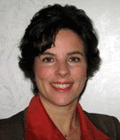 Julie Baron is Principal of COMMUNICATION WORKS. She has over 18 years of communications experience. Julie is a resourceful communications strategist with demonstrated ability to work internally within the organization, as well as externally within the community. Her functional expertise includes executive/employee communications, speech writing, cultural awareness and marketing communications.With a proven track record of positively impacting financial and operating results through communication, Julie’s client list includes Abbott, adidas-Salomon, HUB International, National Association of Realtors, Revell, and Pepsi Americas. Prior to opening the doors of COMMUNICATION WORKS, Julie held senior level communications positions for NEC Technologies, Inc. and Motorola, Inc. She also has agency experience.Julie has published several communication and training articles and has lectured on communications topics including CEO communication, culture development, global communication and internal marketing. She’s been recognized for her leadership abilities, team focus, creative strategy, execution and effective working relationships.An active member of the International Association of Business Communicators (IABC), Julie has held many volunteer leadership positions including president of the IABC/Chicago chapter, the association’s second largest chapter worldwide. Julie graduated from Northwestern University in Evanston, Illinois, with a master’s degree in communications. She holds a bachelor’s degree in broadcasting from SUNY Buffalo.
Julie Baron is Principal of COMMUNICATION WORKS. She has over 18 years of communications experience. Julie is a resourceful communications strategist with demonstrated ability to work internally within the organization, as well as externally within the community. Her functional expertise includes executive/employee communications, speech writing, cultural awareness and marketing communications.With a proven track record of positively impacting financial and operating results through communication, Julie’s client list includes Abbott, adidas-Salomon, HUB International, National Association of Realtors, Revell, and Pepsi Americas. Prior to opening the doors of COMMUNICATION WORKS, Julie held senior level communications positions for NEC Technologies, Inc. and Motorola, Inc. She also has agency experience.Julie has published several communication and training articles and has lectured on communications topics including CEO communication, culture development, global communication and internal marketing. She’s been recognized for her leadership abilities, team focus, creative strategy, execution and effective working relationships.An active member of the International Association of Business Communicators (IABC), Julie has held many volunteer leadership positions including president of the IABC/Chicago chapter, the association’s second largest chapter worldwide. Julie graduated from Northwestern University in Evanston, Illinois, with a master’s degree in communications. She holds a bachelor’s degree in broadcasting from SUNY Buffalo.
 Sean Williams is the owner of Communication AMMO, Inc. He helps leaders improve their communication skills, build strategic communication plans, strengthen internal communication capabilities and effectively measure the results. His clients include the Federal Reserve Bank of Cleveland and KeyBank. Follow him on Twitter at @CommAMMO.
Sean Williams is the owner of Communication AMMO, Inc. He helps leaders improve their communication skills, build strategic communication plans, strengthen internal communication capabilities and effectively measure the results. His clients include the Federal Reserve Bank of Cleveland and KeyBank. Follow him on Twitter at @CommAMMO.
Most recently, Williams was vice president of Corporate Communications for a financial institution, leading the internal communication, and internal and external public relations measurement and evaluation functions during the height of the financial crisis.
Previously, he was manager of Editorial Services for The Goodyear Tire and Rubber Company, responsible for internal communication and video production, photography and event production management. While at Goodyear, Williams lead the team rebuilding the corporate intranet, using editorial content from around the world. He also served as the primary internal communication consultant to the company’s senior leadership and produced videos and still photography for a variety of external and internal constituencies.
 Susan D’Alexander, ABC, is Senior Communications Consultant at Motorola Global Communications. Susan has a 25-year career with Motorola with more than 18 years experience in communication management, including corporate, HR, marketing and corporate social responsibility communications. Susan is a member of the International Association of Business Communicators (IABC) earning an accredited business communicator (ABC) certification in 2008. She holds a Bachelor of Science degree from Western Illinois University and a MBA from Roosevelt University, Chicago, Illinois.
Susan D’Alexander, ABC, is Senior Communications Consultant at Motorola Global Communications. Susan has a 25-year career with Motorola with more than 18 years experience in communication management, including corporate, HR, marketing and corporate social responsibility communications. Susan is a member of the International Association of Business Communicators (IABC) earning an accredited business communicator (ABC) certification in 2008. She holds a Bachelor of Science degree from Western Illinois University and a MBA from Roosevelt University, Chicago, Illinois.
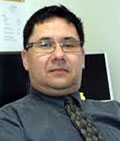 Alex Vass has been a communicator, telling stories and creating messages, all of his working life. He is presently a communications advisor with the Royal Canadian Mounted Police responsible for internal and external communications for the Codiac Regional RCMP detachment based in Moncton, New Brunswick. He along with his fellow RCMP communications colleagues in New Brunswick recognized the need for a
Alex Vass has been a communicator, telling stories and creating messages, all of his working life. He is presently a communications advisor with the Royal Canadian Mounted Police responsible for internal and external communications for the Codiac Regional RCMP detachment based in Moncton, New Brunswick. He along with his fellow RCMP communications colleagues in New Brunswick recognized the need for a
communications audit to demonstrate to senior management the value communications has within the organization and how communications must become part of the organization’s core business. The RCMP in New Brunswick is now on a path towards doing just that. Prior to joining the RCMP in 2005, Alex spent over 25 years as a journalist in Atlantic Canada, 16 years of which was as a reporter with the CTV television
network.

